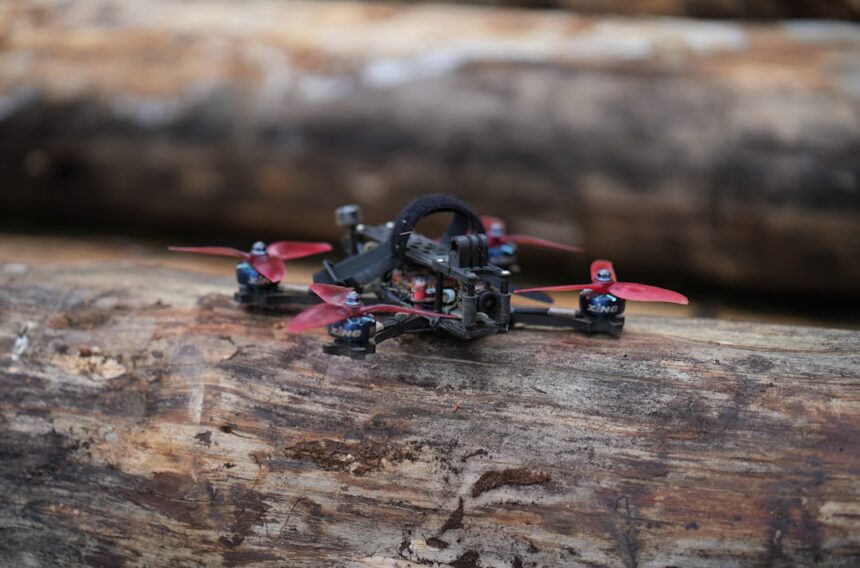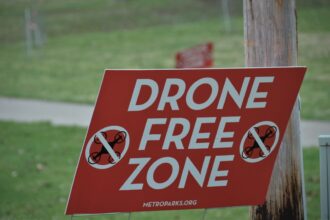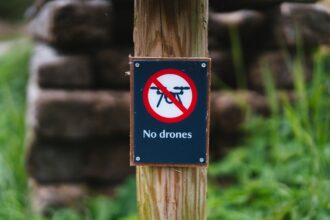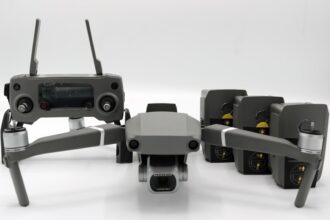First-person view (FPV) drones have emerged as a revolutionary technology, transforming various sectors, including entertainment, agriculture, and notably, military operations. These drones provide operators with a unique perspective, allowing them to experience flight as if they were onboard the aircraft. Equipped with cameras that transmit real-time video feeds, FPV drones enable users to navigate through complex environments with precision and agility.
The rise of FPV technology has not only enhanced recreational flying but has also paved the way for innovative applications in warfare, where situational awareness and tactical advantage are paramount. The integration of FPV drones into military operations marks a significant shift in how conflicts are conducted. Unlike traditional unmanned aerial vehicles (UAVs), which often operate at high altitudes and are controlled remotely, FPV drones can fly at lower altitudes and provide a more immersive experience for the operator.
This capability allows for greater maneuverability and adaptability in dynamic combat scenarios. As nations continue to invest in drone technology, the implications for modern warfare are profound, raising questions about strategy, ethics, and the future of armed conflict.
Key Takeaways
- FPV drones, or first-person view drones, are unmanned aerial vehicles that provide real-time video and telemetry data to the operator, allowing for immersive and precise control.
- The evolution of warfare has seen a shift towards the use of advanced technology, including FPV drones, to gain strategic advantages on the battlefield.
- FPV drones offer advantages in warfare such as enhanced situational awareness, reduced risk to human personnel, and the ability to access hard-to-reach or dangerous areas.
- FPV drones play a crucial role in surveillance by providing real-time video feeds for monitoring and gathering intelligence on enemy movements and activities.
- FPV drones are instrumental in target acquisition by identifying and tracking potential targets for military operations with precision and accuracy.
The Evolution of Warfare
Warfare has undergone dramatic transformations throughout history, shaped by technological advancements and changing geopolitical landscapes. From the introduction of gunpowder to the development of nuclear weapons, each era has brought forth new methods of combat that redefine the battlefield. The 21st century has witnessed the rise of digital warfare, where information technology plays a crucial role in military strategy.
In this context, FPV drones represent a new frontier, merging traditional combat tactics with cutting-edge technology. The evolution of warfare is characterized by a shift from large-scale troop deployments to more agile and precise operations. As conflicts become increasingly asymmetric, with non-state actors and insurgent groups challenging conventional military forces, the need for innovative solutions has never been greater.
FPV drones offer a means to engage in combat with reduced risk to personnel while enhancing operational effectiveness. This evolution reflects a broader trend towards automation and remote warfare, where human involvement is minimized in favor of technological superiority.
Advantages of FPV Drones in Warfare
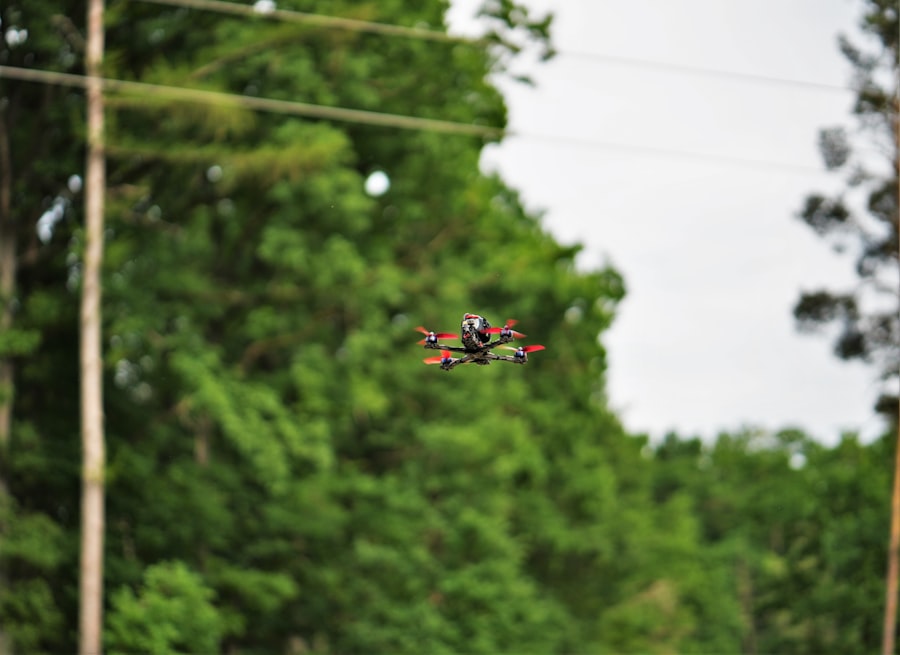
FPV drones present numerous advantages that enhance military capabilities on the battlefield. One of the most significant benefits is their ability to provide real-time situational awareness. Operators can gain a first-person perspective of the environment, allowing them to make informed decisions based on live video feeds.
This capability is particularly valuable in urban warfare scenarios, where visibility can be limited, and threats may be concealed. By utilizing FPV drones, military forces can gather critical intelligence without exposing personnel to unnecessary danger.
This cost-effectiveness allows for greater experimentation and deployment across various units within the armed forces. Their small size and versatility enable them to be used in diverse roles, from reconnaissance missions to direct engagement with enemy forces. As a result, military strategists can leverage FPV drones to enhance operational flexibility and responsiveness in rapidly changing combat situations.
FPV Drones and Surveillance
| Metrics | FPV Drones | Surveillance |
|---|---|---|
| Range | Up to 4 miles | Depends on camera and transmission system |
| Battery Life | Average 20 minutes | Depends on power source and usage |
| Camera Quality | High definition | Varies based on camera model |
| Use Cases | Racing, freestyle flying, aerial photography | Security, monitoring, law enforcement |
Surveillance is a cornerstone of modern military operations, and FPV drones have revolutionized how intelligence is gathered on the battlefield. With their ability to fly at low altitudes and navigate through tight spaces, these drones can capture detailed imagery and video footage of enemy positions, troop movements, and infrastructure. This information is invaluable for commanders who need to assess threats and make strategic decisions based on accurate data.
The use of FPV drones for surveillance also allows for persistent monitoring of specific areas without the need for ground troops. This capability reduces the risk of detection and enhances operational security. Additionally, the real-time feedback provided by FPV drones enables rapid response to emerging threats, allowing military forces to adapt their strategies on the fly.
As surveillance technology continues to advance, the role of FPV drones in gathering actionable intelligence will only become more critical.
FPV Drones and Target Acquisition
Target acquisition is a vital aspect of military operations, and FPV drones play an increasingly important role in this process. By providing operators with a direct view of potential targets, these drones facilitate more accurate identification and assessment of threats. The ability to zoom in on specific locations and gather detailed imagery enhances the precision of targeting decisions, reducing the likelihood of collateral damage.
Furthermore, FPV drones can be equipped with advanced sensors and targeting systems that improve their effectiveness in identifying high-value targets. This capability allows military forces to engage enemy assets with greater confidence and efficiency. As conflicts evolve and adversaries employ more sophisticated tactics, the integration of FPV drones into target acquisition processes will be essential for maintaining a strategic advantage on the battlefield.
FPV Drones and Precision Strikes

One of the most significant applications of FPV drones in warfare is their ability to conduct precision strikes against enemy targets. Unlike traditional airstrikes that may result in widespread destruction, FPV drones can deliver munitions with remarkable accuracy. This precision minimizes collateral damage and civilian casualties, addressing some of the ethical concerns associated with aerial bombardment.
The use of FPV drones for precision strikes also allows for rapid engagement of targets in dynamic environments. Operators can assess situations in real-time and make split-second decisions about when and how to strike. This capability is particularly advantageous in urban warfare scenarios where distinguishing between combatants and non-combatants can be challenging.
By employing FPV drones for targeted strikes, military forces can achieve their objectives while adhering to principles of proportionality and discrimination in armed conflict.
FPV Drones and Intelligence Gathering
Intelligence gathering is a critical component of military strategy, and FPV drones have emerged as powerful tools for collecting information on enemy activities. Their ability to operate discreetly at low altitudes allows them to gather intelligence without alerting adversaries. This stealthy approach enhances the effectiveness of reconnaissance missions and provides commanders with valuable insights into enemy capabilities and intentions.
In addition to visual intelligence, FPV drones can be equipped with various sensors that capture data beyond standard imagery. For instance, thermal imaging cameras can detect heat signatures, revealing hidden enemy positions or movements during nighttime operations. The integration of advanced sensor technology into FPV drones expands their intelligence-gathering capabilities, making them indispensable assets for modern military operations.
FPV Drones and Psychological Warfare
The psychological impact of warfare cannot be underestimated, and FPV drones play a unique role in psychological operations (PSYOP). The mere presence of these drones can instill fear and uncertainty among enemy combatants, as they symbolize advanced technology and surveillance capabilities. The knowledge that they are being monitored by an unseen operator can disrupt enemy morale and decision-making processes.
Moreover, FPV drones can be used strategically to disseminate information or propaganda during conflicts. By broadcasting messages or imagery from the drone’s perspective, military forces can influence public perception and sway opinions in favor of their objectives. This dual role as both a tactical asset and a psychological tool underscores the multifaceted nature of modern warfare.
Ethical and Legal Implications of FPV Drones in Warfare
The deployment of FPV drones in warfare raises significant ethical and legal questions that must be addressed by military leaders and policymakers alike. One major concern is the potential for increased civilian casualties resulting from drone strikes. While precision capabilities have improved significantly, the risk remains that operators may misidentify targets or fail to account for civilians in proximity to military objectives.
Additionally, the use of FPV drones blurs the lines between combatants and non-combatants, complicating adherence to international humanitarian law (IHL).
As nations continue to integrate drone technology into their military strategies, it is imperative that ethical frameworks evolve alongside these advancements to ensure accountability and compliance with established legal standards.
Future of FPV Drones in Warfare
The future of FPV drones in warfare appears promising as technological advancements continue to reshape military capabilities. Innovations such as artificial intelligence (AI) integration could enhance autonomous flight capabilities, allowing drones to make real-time decisions based on environmental data without direct human intervention. This evolution could further increase operational efficiency while reducing risks to personnel.
Moreover, as nations invest in research and development for drone technology, competition will likely drive improvements in performance, range, and payload capacity. The potential for swarm technology—where multiple drones operate collaboratively—could revolutionize tactics on the battlefield by overwhelming adversaries with coordinated attacks or surveillance efforts. As these developments unfold, it will be crucial for military strategists to consider not only the tactical advantages but also the ethical implications associated with increasingly autonomous drone systems.
The Impact of FPV Drones on Modern Warfare
In conclusion, FPV drones have significantly impacted modern warfare by enhancing situational awareness, improving target acquisition accuracy, and enabling precision strikes while minimizing collateral damage. Their versatility as surveillance tools and psychological instruments further underscores their importance on the battlefield. However, as nations continue to embrace this technology, it is essential to address the ethical and legal challenges that arise from their use.
The evolution of warfare necessitates a careful examination of how emerging technologies like FPV drones shape military strategy and international relations. As these capabilities advance, they will undoubtedly redefine conflict dynamics while raising critical questions about accountability and adherence to humanitarian principles. Ultimately, the integration of FPV drones into military operations represents both an opportunity for enhanced effectiveness and a challenge that requires thoughtful consideration from military leaders and policymakers alike.
The advent of FPV (First Person View) drones has significantly transformed modern warfare, offering unprecedented real-time reconnaissance and precision targeting capabilities. These drones have become indispensable tools on the battlefield, providing soldiers with a bird’s-eye view of enemy positions and movements. For a deeper understanding of how technology is reshaping military strategies, you might find the article on In The War Room insightful. It explores various technological advancements in warfare, including the impact of drones, and offers a comprehensive analysis of their strategic implications.
FAQs
What are FPV drones?
FPV drones, or first-person view drones, are unmanned aerial vehicles equipped with cameras that provide real-time video feed to the operator, allowing them to see and control the drone as if they were on board.
How have FPV drones changed the battlefield?
FPV drones have revolutionized modern warfare by providing real-time intelligence, surveillance, and reconnaissance capabilities to military forces. They have also been used for precision strikes, target acquisition, and battlefield assessment.
What advantages do FPV drones offer in military operations?
FPV drones offer the advantage of providing situational awareness to military personnel, allowing them to gather intelligence, monitor enemy movements, and assess battlefield conditions without putting soldiers at risk.
What are the potential drawbacks of using FPV drones in warfare?
The use of FPV drones in warfare raises ethical and legal concerns, as they can blur the lines between combatants and civilians, and raise questions about the appropriate use of force and the protection of non-combatants.
How have FPV drones impacted military strategy and tactics?
FPV drones have changed military strategy and tactics by enabling more precise and targeted operations, as well as by providing commanders with real-time information to make informed decisions on the battlefield.
